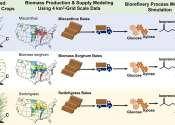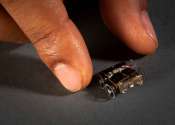Study identifies performance, economic and environmental tradeoffs involved in turning plants into jet fuel
Every year, airplanes crisscrossing U.S. skies burn 23 billion gallons of fuel, leaving contrails and 8% of the nation's transportation-related greenhouse gas (GHG) emissions in their wake. A recent study published in Proceedings ...
Dec 15, 2023
0
22









